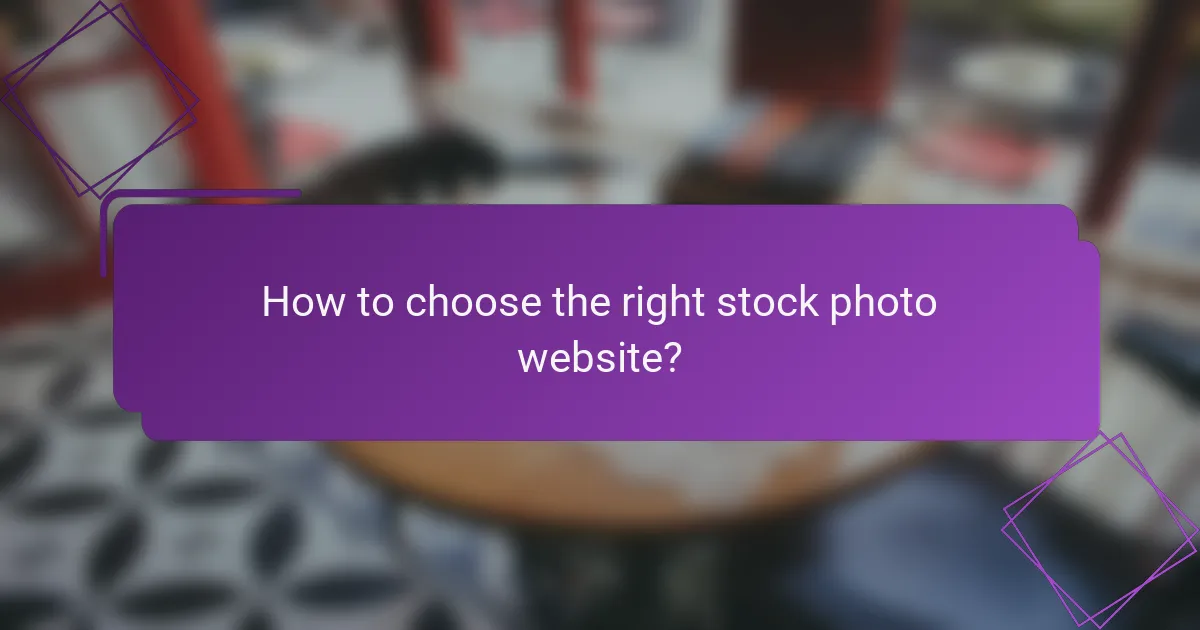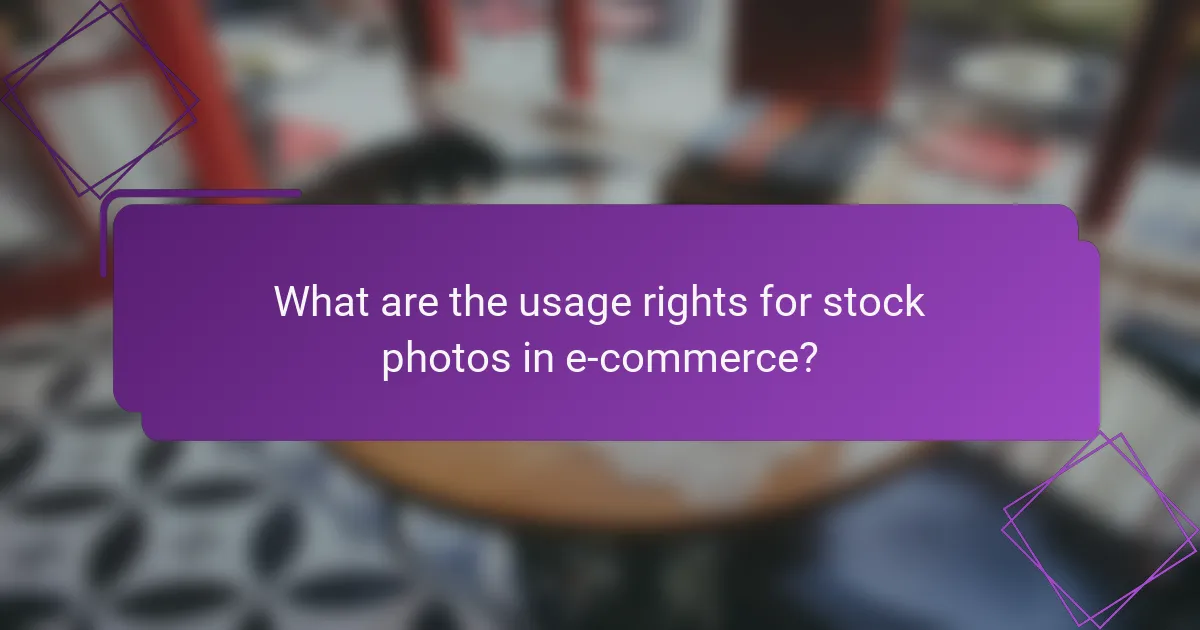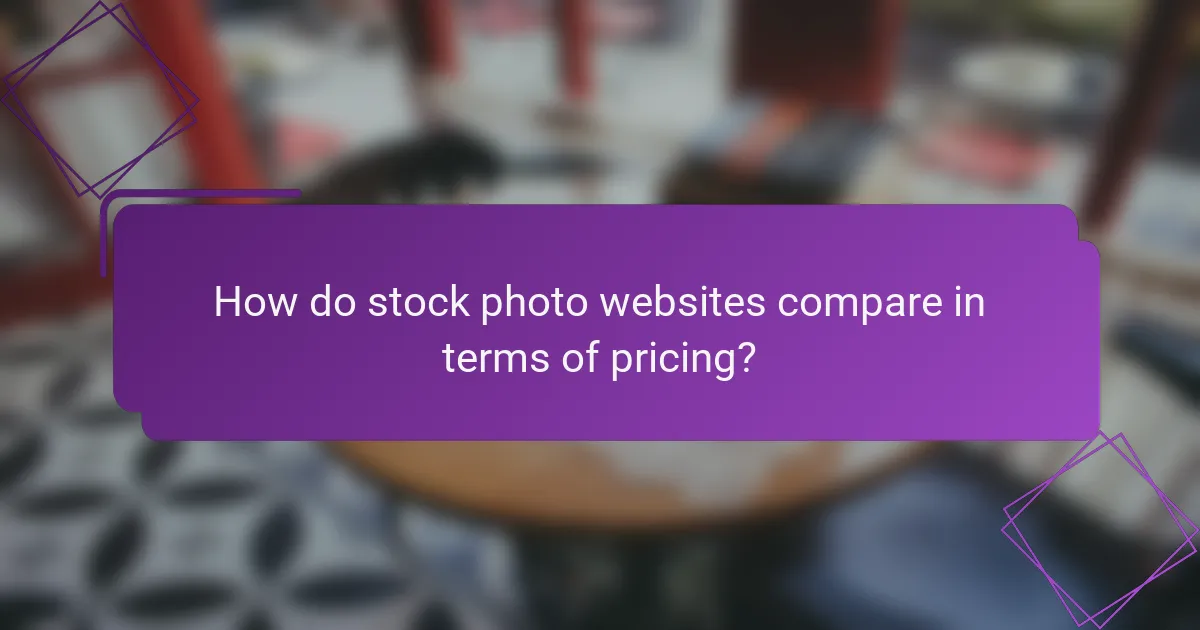Stock photo websites offer a diverse range of high-quality images, catering to various needs and budgets. Understanding the different licensing options—royalty-free, rights-managed, and editorial use—is essential for ensuring compliance with usage rights. By evaluating factors such as pricing, image variety, and user experience, you can select the best platform for your project.

Which stock photo websites offer the best quality images?
The best quality images are typically found on stock photo websites that emphasize high-resolution content and professional photography. Websites like Shutterstock, Adobe Stock, Getty Images, iStock, and Unsplash each have unique strengths in image quality, catering to various needs and budgets.
Shutterstock image quality
Shutterstock is known for its vast library of high-quality images, offering millions of options across various categories. The platform ensures that images meet strict quality standards, often featuring professional photographers and artists.
When selecting images, consider the resolution and licensing options available. Shutterstock provides images in various resolutions, allowing users to choose based on their specific project requirements.
Adobe Stock image quality
Adobe Stock offers high-quality images that integrate seamlessly with Adobe Creative Cloud applications. The images are curated to meet professional standards, making them ideal for designers and marketers.
Adobe Stock emphasizes quality by providing access to premium content, including exclusive collections. Users can expect high-resolution images that are suitable for both digital and print media.
Getty Images image quality
Getty Images is renowned for its premium quality and editorial content, featuring images from top photographers worldwide. The platform specializes in high-resolution images that are often used in professional publications.
When using Getty Images, be aware of the licensing fees, which can be higher than other platforms. However, the quality and uniqueness of the images often justify the investment for commercial projects.
iStock image quality
iStock, a subsidiary of Getty Images, offers a wide range of quality images at more affordable prices. The platform provides both standard and premium images, catering to different budgets and project needs.
Users should consider the licensing options available on iStock, as they can affect image usage. The quality of images is generally high, but it may vary between standard and premium selections.
Unsplash image quality
Unsplash is a popular platform for free high-quality images contributed by photographers worldwide. The images are often characterized by their artistic style and unique perspectives, making them suitable for various creative projects.
While Unsplash images are free to use, it’s essential to check the licensing terms for each image. The quality is generally high, but since the content is user-generated, consistency may vary.

What are the licensing options for stock photos?
Stock photos are typically available under three main licensing options: royalty-free, rights-managed, and editorial use. Understanding these options is crucial for selecting images that meet your project’s needs while ensuring compliance with usage rights.
Royalty-free licensing
Royalty-free licensing allows you to pay a one-time fee to use an image multiple times without incurring additional costs. This type of license often includes a wide range of uses, such as commercial and personal projects, making it a popular choice for businesses and individuals alike.
However, it’s important to read the specific terms, as some royalty-free licenses may impose restrictions on resale or require attribution. Generally, prices can range from a few dollars to several hundred, depending on the image quality and source.
Rights-managed licensing
Rights-managed licensing is more restrictive and involves paying for specific usage rights based on factors like duration, geographic location, and the type of media. This means that the cost can vary significantly, often leading to higher fees for exclusive rights.
When using rights-managed images, you must clearly define how you plan to use the image, which can be beneficial for high-stakes projects where exclusivity is crucial. Be cautious, as failing to adhere to the license terms can lead to legal issues.
Editorial use licensing
Editorial use licensing permits images to be used only in contexts that are newsworthy or informative, such as articles, blogs, or documentaries. This type of license typically prohibits commercial use, meaning you cannot use these images for advertising or promotional purposes.
When selecting editorial images, ensure they are suitable for your content and check if attribution is required. These images are often available at lower costs, but the limitations on usage must be carefully considered to avoid potential copyright infringements.

How to choose the right stock photo website?
Choosing the right stock photo website involves evaluating factors like pricing, image variety, user interface, and customer support. These elements will help you find a platform that meets your specific needs and budget.
Pricing comparison
Pricing for stock photo websites can vary significantly. Some platforms offer subscription models, while others charge per image. Subscription plans may range from around $10 to $50 per month, allowing access to a set number of downloads, while pay-per-image options can cost anywhere from a few dollars to over $100 depending on the image quality and licensing.
When comparing prices, consider the total cost based on your expected usage. If you need multiple images regularly, a subscription may save you money in the long run. Look for any hidden fees, such as costs for extended licenses or high-resolution downloads.
Image variety
The variety of images available on stock photo websites is crucial for finding the right visuals for your projects. Some sites specialize in specific niches, such as business or nature photography, while others offer a broader range. Evaluate the categories and styles available to ensure they align with your needs.
Check for the inclusion of diverse content types, such as vectors, illustrations, and videos, as this can enhance your creative options. Platforms with user-generated content may also provide unique perspectives that standard stock images lack.
User interface experience
A user-friendly interface can significantly enhance your experience on a stock photo website. Look for platforms that offer intuitive navigation, effective search filters, and easy image previews. A well-designed interface saves time and makes it easier to find the right images quickly.
Consider features like the ability to create lightboxes for favorite images or download history tracking. These tools can streamline your workflow and improve overall efficiency when sourcing images for projects.
Customer support availability
Reliable customer support is essential when using stock photo websites, especially if you encounter issues with licensing or downloads. Check the support options available, such as live chat, email, or phone assistance, and their response times.
Some platforms also provide extensive FAQs or community forums that can help resolve common questions. Ensure that the support is accessible during your working hours, particularly if you are on a tight deadline.

What are the usage rights for stock photos in e-commerce?
Usage rights for stock photos in e-commerce dictate how images can be used commercially. Understanding these rights is crucial to avoid legal issues and ensure compliance with licensing agreements.
Commercial use rights
Commercial use rights allow businesses to use stock photos in promotional materials, websites, and products for sale. Most stock photo websites offer images under licenses that permit commercial use, but the specifics can vary. Always check the license type to confirm that it covers your intended use.
Common licenses include Royalty-Free (RF) and Rights Managed (RM). RF licenses typically allow for broader use without additional fees, while RM licenses may restrict usage based on specific conditions, such as duration or geographic area.
Attribution requirements
Attribution requirements specify whether you must credit the photographer or stock photo agency when using an image. Some licenses, particularly those that are free or low-cost, often require attribution, while others do not.
When attribution is necessary, it usually involves including the creator’s name and a link to the source. Failing to provide proper credit can lead to legal repercussions, so always verify the attribution rules associated with each image.
Restrictions on modifications
Restrictions on modifications determine whether you can alter stock photos, such as cropping, color adjustments, or adding text. Many stock photo licenses allow modifications, but some may prohibit them entirely or limit changes to specific contexts.
Before using an image, review the license to understand what modifications are permitted. If alterations are restricted, consider selecting images that fit your needs without requiring changes to avoid potential violations.

How do stock photo websites compare in terms of pricing?
Stock photo websites vary significantly in pricing, influenced by factors such as image quality, licensing options, and subscription models. Generally, prices can range from a few dollars for basic images to hundreds for premium content, depending on the intended use and exclusivity.
Free stock photo websites
Free stock photo websites offer images at no cost, making them attractive for budget-conscious users. However, the quality and variety may be limited compared to paid options. Popular platforms include Unsplash and Pexels, which provide high-resolution images under flexible licenses.
Subscription-based pricing
Subscription-based stock photo websites typically charge a monthly or annual fee, granting access to a library of images. Prices can range from around $10 to $300 per month, depending on the number of downloads and image quality. This model is ideal for businesses that require frequent access to new images.
Pay-per-download options
Pay-per-download stock photo websites allow users to purchase images individually, with prices usually between $1 and $50 per image. This option suits occasional users who do not need a large volume of images. Be mindful of licensing agreements, as they can vary between platforms.
Enterprise licensing
Enterprise licensing is designed for larger organizations that require extensive image use across multiple projects. Pricing for enterprise licenses can vary widely, often starting in the low thousands of dollars. This option typically includes custom agreements for usage rights and additional services, such as dedicated support.
